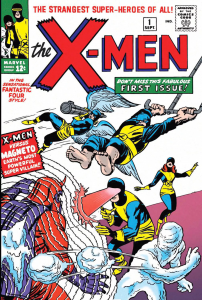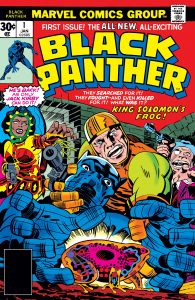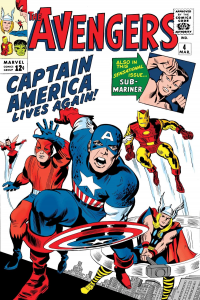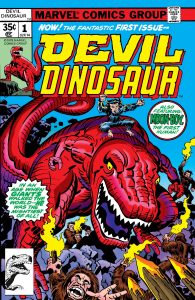WARNING: The following article contains spoilers for Avengers: Endgame, Avengers: Infinity War, Spider-Man: Far From Home and the first issue of The Avengers (1963).
Jack “King” Kirby. If you’ve seen a Marvel movie (or a DC one for that matter), you have already been touched by his ideas.
Born Jacob Kurtzberg on August 28, 1917 in New York City, Jack Kirby became a creative force to be reckoned with in his 76 years. Kirby would, during his time with Marvel Comics, construct the world of Captain America, engineer Iron Man’s Mark 1 Armor, and mutate the X-Men. He cleverly twisted Norse myths to create his own version of Thor and the Pantheon, and plumbed the depths of his cosmic creativity for Silver Surfer, Galactus, and the Celestials. When the job called for stranger, more unique ideas still, Kirby pulled Groot, Fin Fang Foom, and Devil Dinosaur out of his hat. No idea was too much for The King.




X-Men #1 Black Panther #1 Avengers #4 Devil Dinosaur #1
In 1963, Jack Kirby launched the first Avengers team in the form of Iron Man, Thor, Hulk, Ant-Man, and The Wasp to defeat Thor’s evil and mischievous brother, Loki. In 2019, the same team was assembled, along with Captain America, Black Widow, and Rocket Raccoon (not actually a raccoon, also not a rabbit), to go back in time to reconvene the Infinity Stones to defeat Thanos. To celebrate Jack Kirby’s 102nd birthday and his legacy of characters, and in the spirit of reflecting on the past from our comfy place here in the future, we’re going to examine the science of time travel in Avengers: Endgame.

In Avengers: Infinity War, Thanos snaps his fingers and, with the power of the Infinity Stones, erases half of all life in the universe. This decimation has become known around the world as the “Snap.” In Avengers: Endgame, following the revelation that Thanos then used the stones to destroy the stones, The Avengers devise an elaborate plan to pull a time heist. They can’t change what happened, but with the power of the Infinity Stones they can hope to change the future.
War Machine proposes going back in time to kill Thanos as a baby, but Professor Hulk quickly rejects this plan, explaining that movie time travel is not real: Back to the Future and The Terminator get it all wrong. They oversimplify timelines by presenting a time loop. Physicists call these closed timelike curves. In a closed timelike curve, the future is predetermined by the effects of events in the past, and any changes within the loop will dramatically alter the future with what are called ripple effects. Try not to think about closed timelike curves too much. Although they’re used frequently in science fiction, Professor Hulk assures us, “Time doesn’t work that way; changing the past doesn’t change the future.” If anything, time loops produce too many paradoxes.
Instead, Iron Man references quantum physicist David Deutsch, alluding to his Many-Worlds Interpretation (also known as Multiverse Theory) which suggests that making a change to the timeline splinters it, causing a divergent timeline to branch off from the original. With the Many Worlds Interpretation in mind, Earth’s Mightiest Heroes decide to steal the Infinity Stones from their places throughout Marvel Cinematic History so they can use them to reverse The Snap in the present. During their trip through time, the Ancient One warns Bruce Banner of the risk of creating divergent timelines should the Avengers remove an Infinity Stone.
Of course, the Avengers are successful in their time heist. They pluck the six Infinity Stones from history and Professor Hulk reverses the Snap. After restoring the lives of over 3 billion people, they return the stones to their exact historic locations, preserving their original timeline and preventing the formation of a new one, which could inadvertently tear apart the fabric of the universe. Everyone killed in the Snap is restored exactly where they disintegrated five years earlier. In Spider-Man: Far From Home, we will learn to call this “The Blip.” The Blip is the intended consequence of all of our heroes’ time meddling. Can you think of some unintended consequences?

Zac Zemantic is a Group Sales Representative at the Connecticut Science Center. He has a B.A. in Visual Design with a specialty in Illustration from UMass Dartmouth and he wants to talk to you about comic books.



